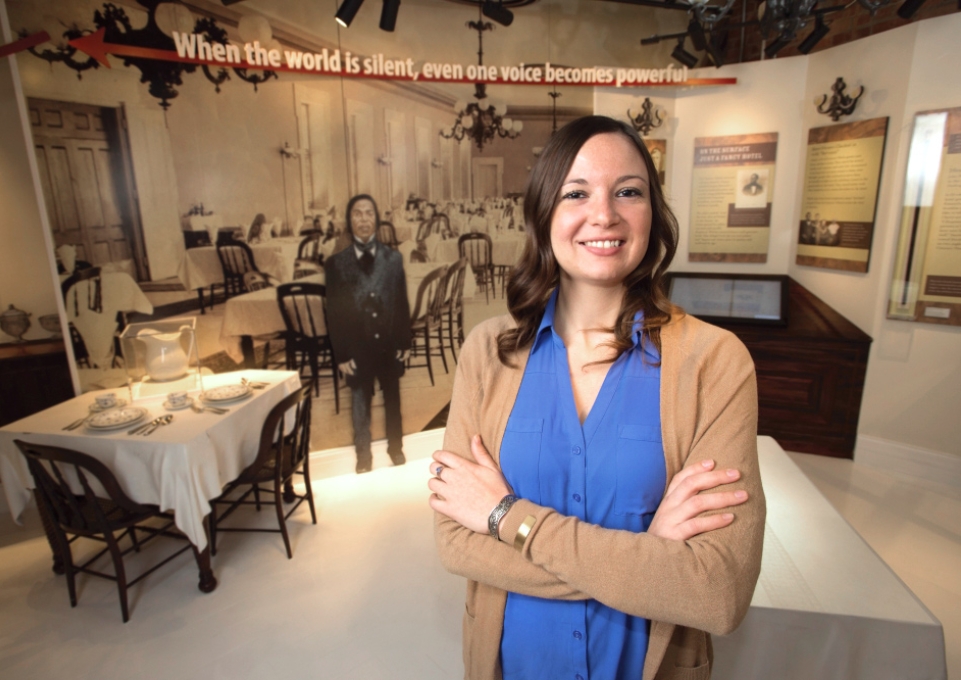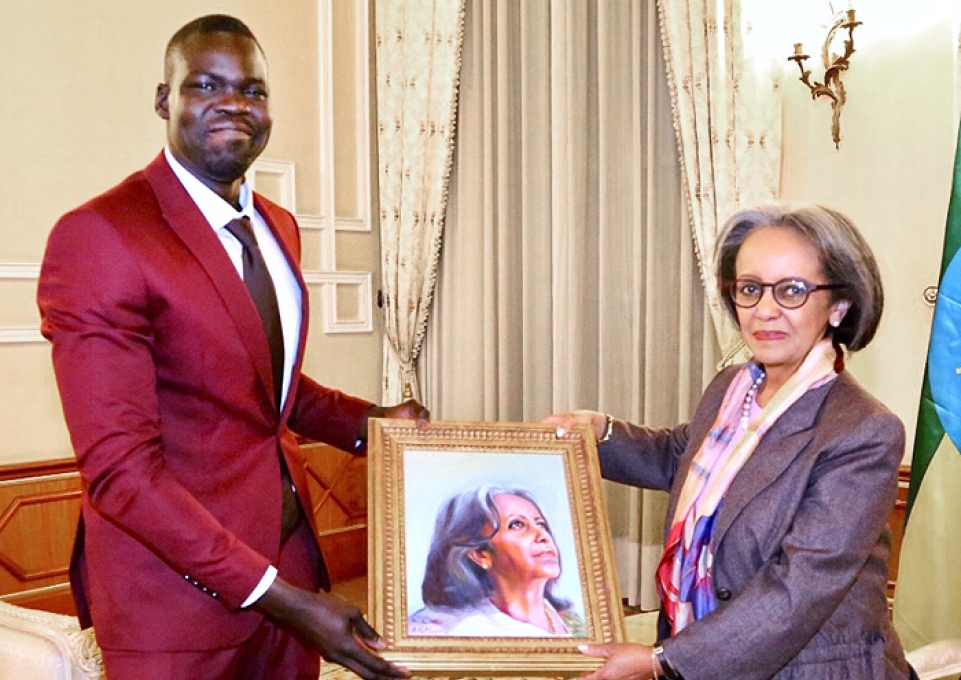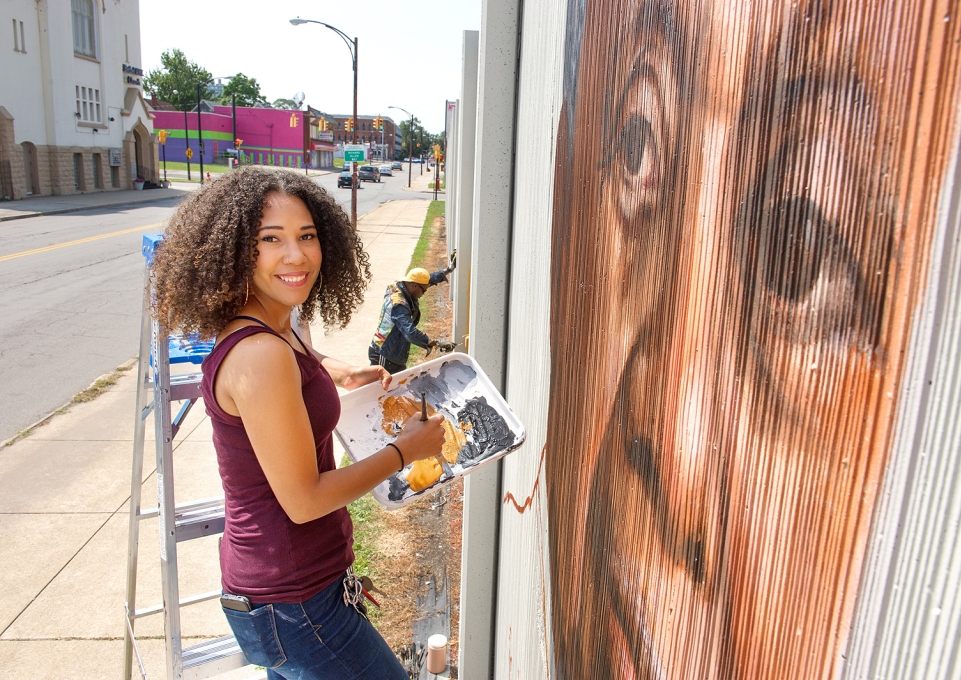
Ally Spongr '12
Commemorating the Freedom Seekers
Niagara Falls, New York, is known to tourists and locals alike thanks to its natural wonder, state park, and family-fun activities. In a city famous for its long-standing attractions, Ally Spongr, B.F.A. ’12, and her small team were tasked with opening the first new Niagara Falls cultural attraction in over 35 years.
“It’s our job to commemorate the freedom seekers and abolitionists who weren’t necessarily famous like Frederick Douglass or Harriet Tubman, but who played a pivotal role in the activity of the Underground Railroad that happened exactly where we stand today,” said Spongr, who is director and curator of the Underground Railroad Heritage Center in Niagara Falls. “Our goal always has been to showcase the everyday individual.”
The Heritage Center, which opened in May 2018, is an immersive museum located in the former U.S. Custom House, built in 1863. It features historical interpretations, interactive displays, and artifacts from Underground Railroad activity in Niagara Falls.
Engaging with Visitors
“You can engage visitors by working through a historical lens,” Spongr said. “The stories of the past can turn into conversations about how those legacies unfold today. We also have a critical responsibility to highlight contemporary issues and to connect the past to the present.”
Many tourists—and even local residents—were unaware of the key role Niagara Falls played in the Underground Railroad, according to Spongr. The Niagara River served as a critical gateway from the United States to Canada on the secret network of routes and safe havens that helped guide enslaved African Americans to freedom.
“It was often easier to travel across the Niagara River than Lake Erie or Lake Ontario,” Spongr said. “When freedom seekers reached customs at the Canadian border, they could cross without identification or being questioned.”
Visitors to the Heritage Center meet several “characters” on their journey, she said.
“The characters are based on real people who lived and worked in Niagara Falls in the late 1800s. We wanted to help shift the traditional slave narrative to one of self-agency, to showcase how ordinary people had the courage to risk death daily for freedom, to be able to work for a living wage, and to own property.”
"It’s been a lot of work, but so rewarding to see the museum go from ideation to reality.”
Wearing a Lot of Hats
In 2015 Spongr was hired as a project coordinator for the Niagara Falls National Heritage Area, an area designated by Congress in 2008 that includes the communities of Niagara Falls, Youngstown, and Lewiston. The Heritage Area spans from Niagara Falls to Old Fort Niagara and has profound cultural and natural significance to American history.
Spongr assumed the director role in fall 2016. Her current position is split between overseeing the Heritage Center and developing new programs for the Heritage Area.
“I can wear pretty much any hat,” she said.
Although a community coalition created the vision for the Heritage Center over a decade ago, Spongr said, the design-build phase of the museum was relatively short.
“We worked under an aggressive timeline, from starting construction in January 2016 to the opening in spring 2018. It’s been a lot of work, but so rewarding to see the museum go from ideation to reality. We don’t have one goal or expectation for our visitors. Our hope is that they connect the past to the present with their own perspective and life experience,” she said. “Ultimately, we want visitors to take some action, no matter how small, to hopefully create change."



